On June 19th Sunriser left the lively and touristic Eastern Caribbean together with Britt and Abayomi to sail Southwest into the unknown waters of Venezuela. After a pleasant and uneventful overnight sail we arrived to a completely different world, the deserted island of La Blanquilla where we moored at the secluded cove El Americano, where Adventure joined us from Grenada. We felt like discoverers setting foot in a white sandy beach untouched by human presence for months.
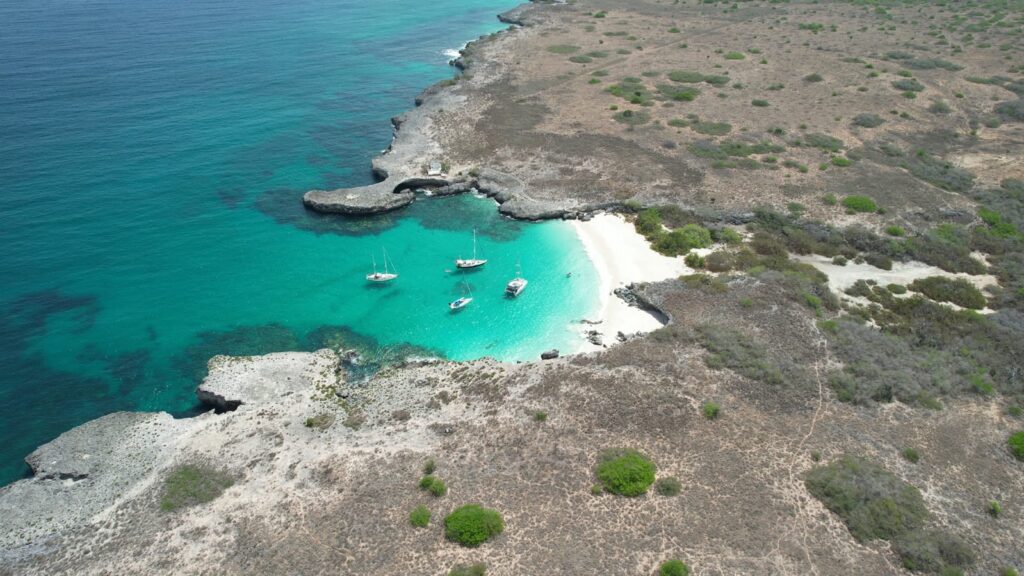






La Blanquilla, indeed, has no permanent residents. Only a coastguard post manned by 9 people, who received us with open arms as a welcome distraction from their isolation. They checked our paperwork and the boat, and politely asked if we could give them some spices and sugar to spice up what must be a very monotonous diet.
We thought our 48 hour stay would just be relaxing and enjoying the peace and quiet, but the following day the coastguard came back, this time in full uniform and armed to the teeth to ask our assistance in rescuing the missing crew of a fishing boat in a nearby island. We were of course happy to help, and everyone stepped aboard Britt, with the most powerful engine, to the rescue of the shipwreck. In the end it was less dramatic than it appeared at first sight, as the fishing boat was overturned and the crew managed to swim ashore and had just been reached by another boat when we arrived to the scene, but it was for us a fabulous adventure, and allowed us to make friends with the very sympathetic coastguard guys.



Being on friendly terms with the officials, we were allowed to stay a bit longer than the regulatory 48 hours and had a great time with our four boats and later on joined by Lea.
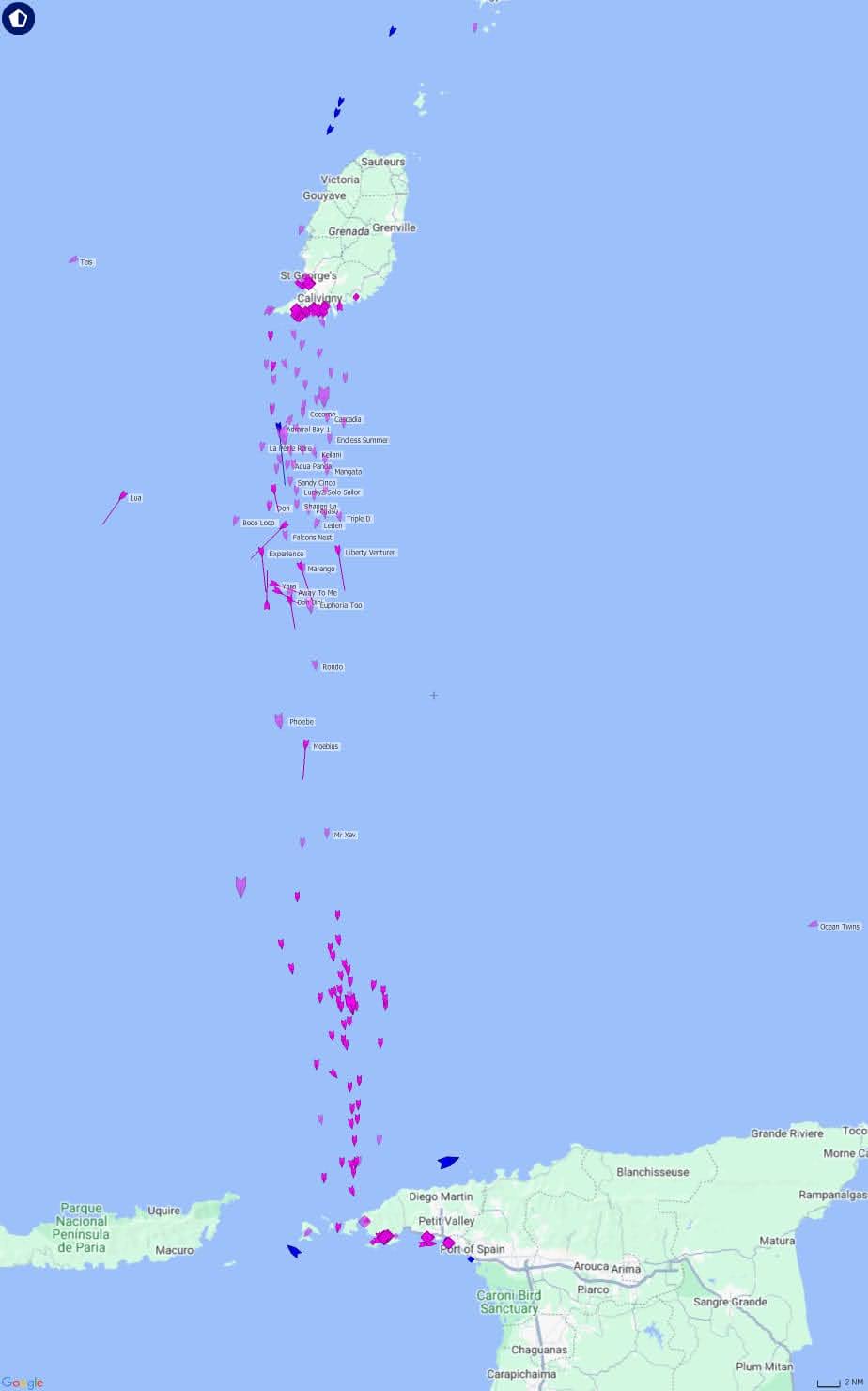
In the mean time large hurricane Beryl was forming and going more south than previously forecasted. We were in a safe spot, but where Grenada is very seldom hit by hurricanes, this time a lot of boats searched rescue on the island of Trinidad, which proved to be a good decision. The devastation after Beryl on the islands we just left behind is hard to imagine. The shops and bars we just visited a week before are all gone. The boats in Trinidad organised a relief mission after Beryl, bringing food and construction material to the islands that have been hit.
Already at La Blanquilla we noticed a huge difference in the state of the coral and underwater life with respect to the Eastern Caribbean. The waters of Venezuela are some degrees colder and the coral is much healthier and diverse. Jos made a beautiful dive around a large rock and saw parrot fish, stone fish, morenes, lionfish, spider crabs, barracuda’s and angel fish.






After our extended stay in La Blanquilla we sailed to the highlight of the Venezuela islands, the archipelago of Los Roques.
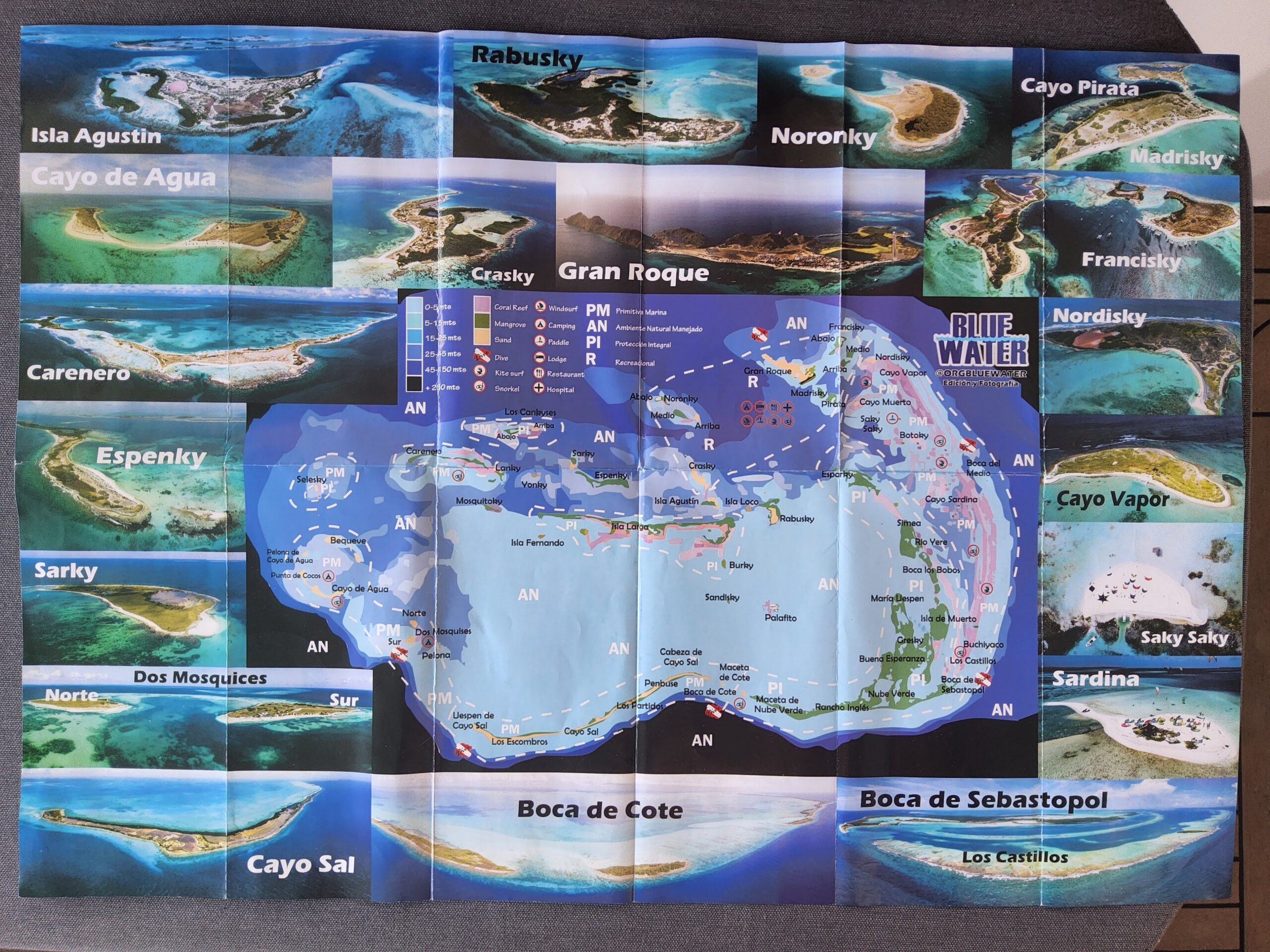
Only the main island (Gran Roque) is inhabited, the rest are coral islands. Many islands have names that end with -ky, after the American keys. We checked in on Gran Roque and went to Madrisky the next day. We then investigated the east side (Boca de Sebastopol and Boca del Medio) behind a giant reef, where you could hear and see the big ocean waves breaking just 100 meters ahead of our anchorage. Then to Crasky, had dinner and danced on Isla Agustin, Sarky, Carenero, and later the west side with Dos Mosquises, Cayo de Agua and Bequeve.
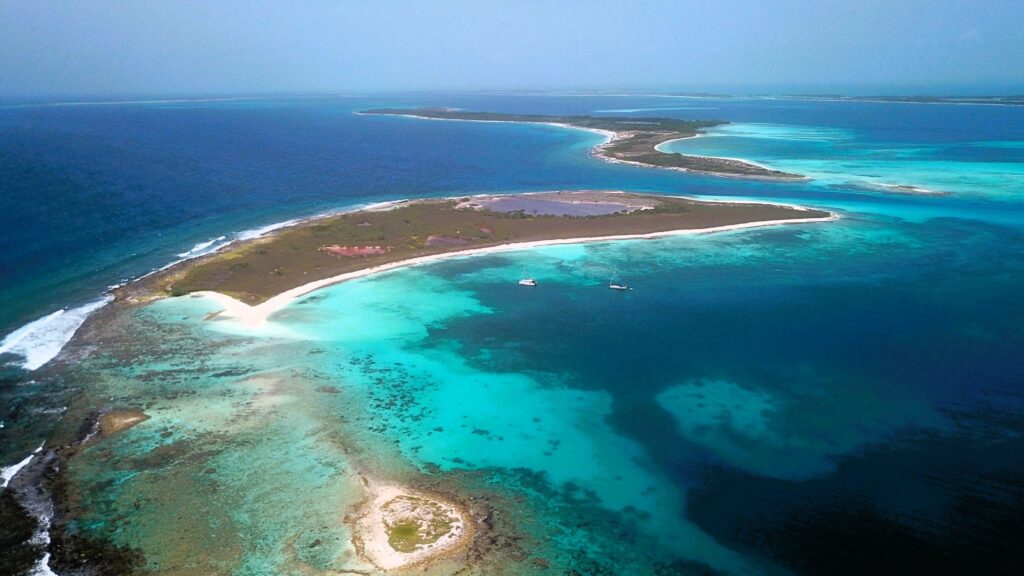
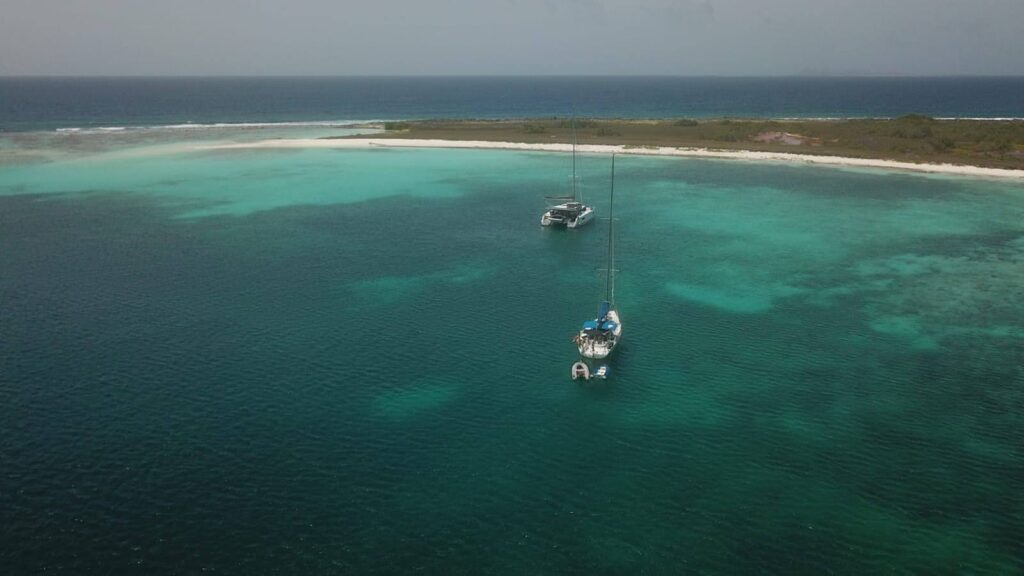
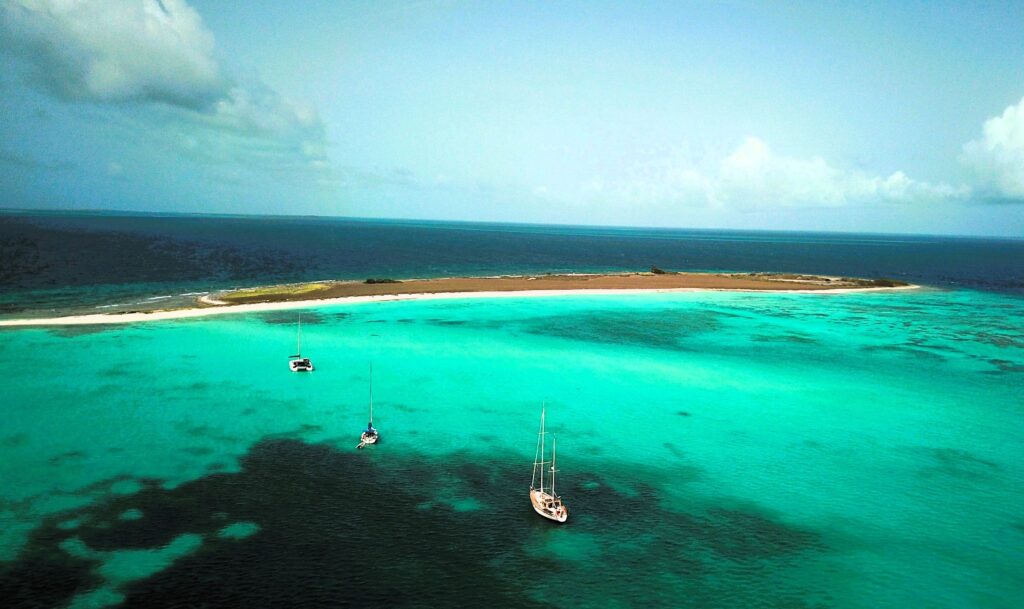
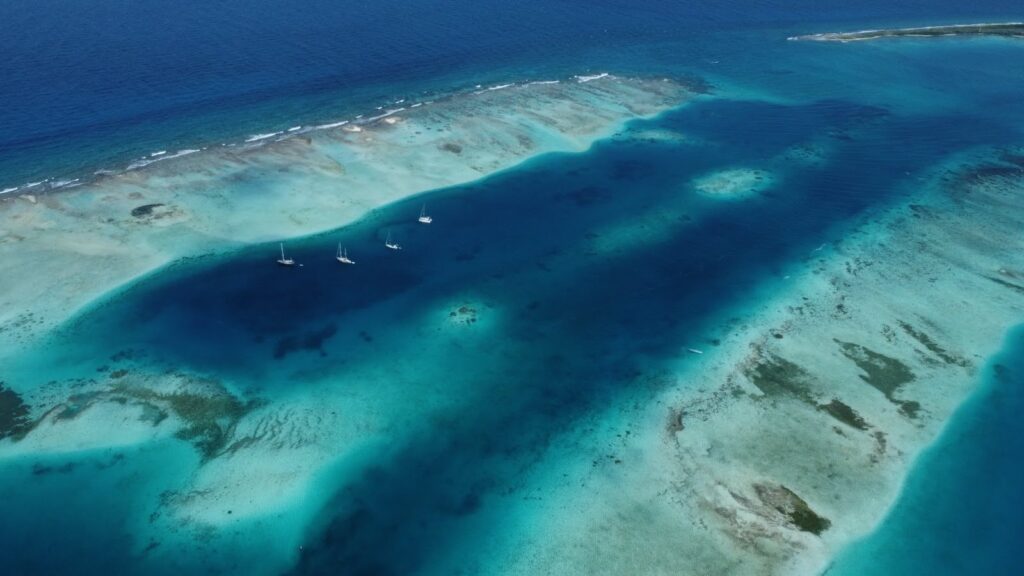
It has been a highlight for us among our Caribbean journey. No cars, no roads, no concrete, only sand under your feet. Hardly any people, only some scattered Venezuelan tourists, including president Maduro (who arrived per helicopter, as we happened to be anchored in front of his holiday house) and fishermen running more or less improvised restaurants in their homes. We spent two weeks of sailing, swimming, snorkeling, diving in turquoise waters and walking in white pink beaches.










It was hard to tear ourselves away from a true paradise, but we only had permit to stay two weeks. However, on the way to Bonaire, there are still the islands of Las Aves, where boats may again stay in transit for 48 hours. If possible at all, Las Aves are even more isolated and wild than La Blanquilla and Los Roques: Only thousands of birds are there to welcome the passing boats.





Fishermen also stay sometime fishing in the islands staying in huts and they pass by the yachts offering lobster and fish not wanting any money but basic goods in exchange. We traded drinking water, pain killers and one hour of internet for lobster, conch and fish. By now we have mastered the art of cooking lobster and all sorts of fish in various styles, but conch was a new challenge: first time we hammer our food before cooking it.



Hidden in the mangroves we found the traces left by previous sailors in the form of an open air museum made with driftwood, shells and corals with the engraved names of passing ships. We also left our contribution; maybe in some years some other friend sailors will also pass through Las Aves and recognize Sunriser’s name.





After almost a month away from ‘civilization’, the word has changed somehow in meaning for us. The respectful and careful way in which these people manage the natural resources seem in a way more civilized than the civilized taming of the sea and beaches with buildings, promenades and roads. We realize that the islands of Venezuela are a luxury destination, a luxury of simplicity and nature which we have been extremely privileged to enjoy.
After one month, no better way for Sunriser to leave paradise than under Spinnaker and rainbow, and so she sails to Bonaire.
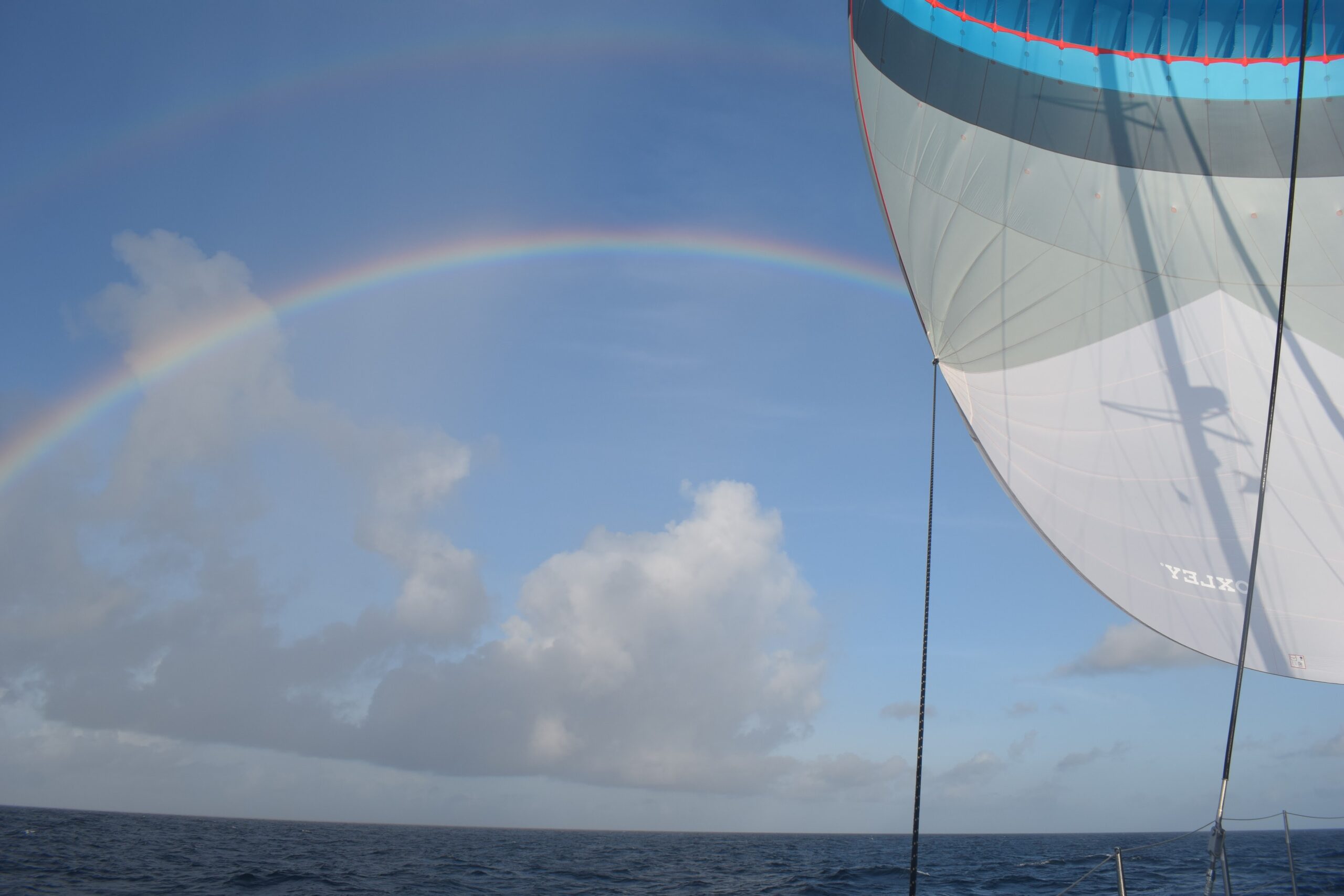
Here the vlog from sailing Lea who was there too with us. Starting at 6 minutes into the video.
Great post. Might just have to follow in your footsteps 👣
Let us know if and when you go. Got lots of tips for you.
What a beautiful and poetic story again of your adventures at the Caribbean seas 👍!
I love to see the images you made with your drone. Very nice the story of rescueing the fishermen 👏👏. See you soon 😘😘!
We’ll catch up soon, lots of stories to tell! 🥰
Great blog Jos . Well done